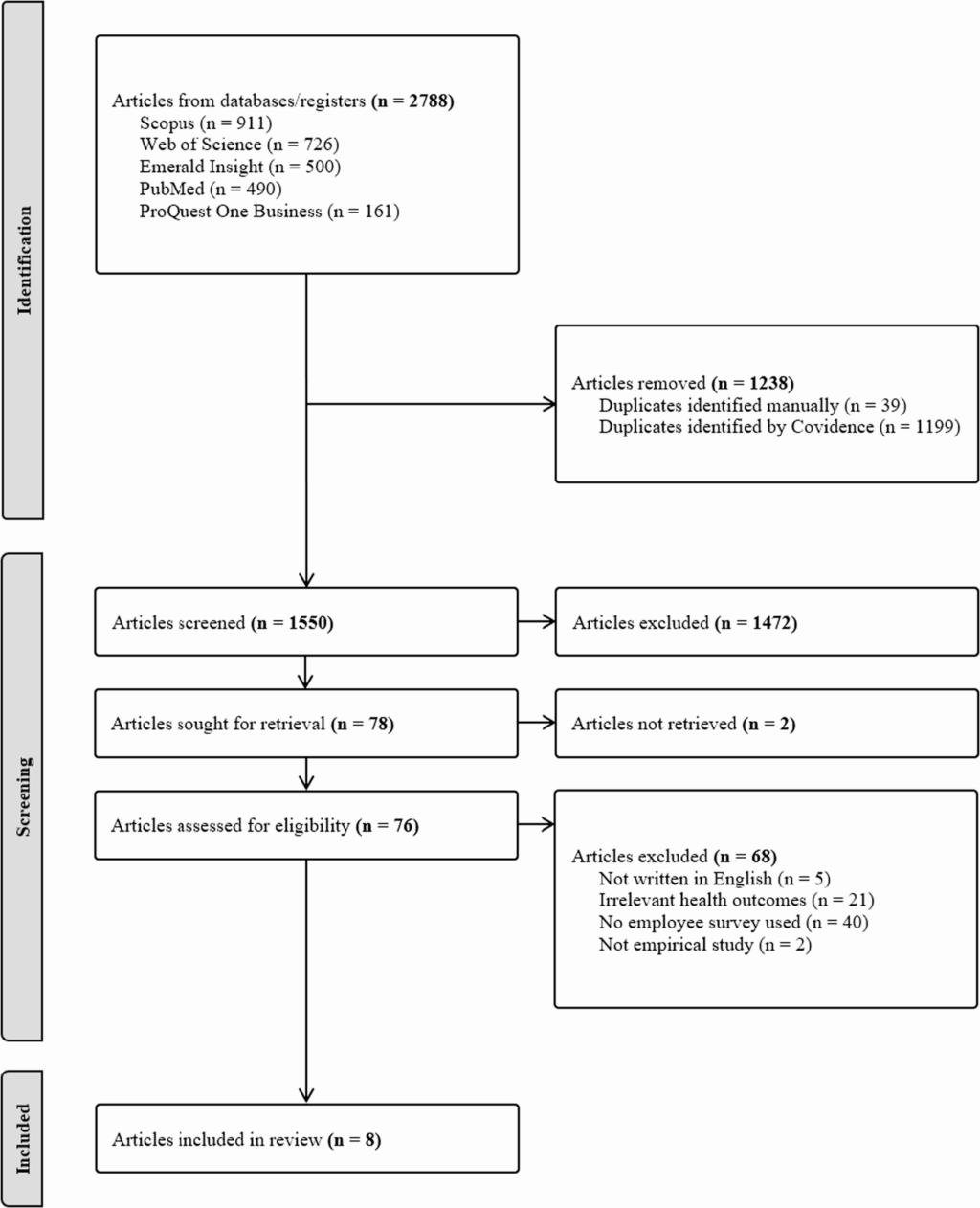
A comprehensive scoping review has shed light on the pivotal role employee surveys play in promoting physical health and healthy lifestyles within the workplace. This review, adhering to the PRISMA-ScR guidelines and methodologies established by Arksey and O’Malley, aimed to explore how surveys can be leveraged to enhance employee well-being. The study, registered under the Open Science Framework, evaluated a broad range of research to determine effective strategies for using employee surveys as a health promotion tool.
The review encompassed a decade’s worth of peer-reviewed empirical articles, focusing on studies that utilized employee survey data to assess physical health and lifestyle factors such as stress, diet, and exercise. The research spanned various industries and countries, reflecting a diverse approach to workplace health initiatives.
Eligibility and Methodology
To qualify for inclusion, studies needed to investigate employee health or lifestyle factors, utilizing data from surveys conducted by organizations or external consultancies. The review excluded gray literature and non-English publications, ensuring a focus on high-quality, peer-reviewed research.
The search strategy, developed with librarians from Mälardalen University, involved databases like ProQuest One Business and PubMed. A meticulous screening process using Covidence software ensured the selection of relevant studies, ultimately narrowing the field to eight articles that met the stringent criteria.
Insights from the Review
The studies, originating from seven countries, employed various research designs, including cross-sectional and longitudinal approaches. These studies highlighted the diverse applications of employee surveys, from assessing physical activity levels to evaluating psychological well-being and social support structures within organizations.
One significant finding was the use of employee surveys to measure associations between work-related factors and health outcomes. For instance, a study by Schult et al. demonstrated how a health initiative reduced physical inactivity among employees, showcasing the potential of surveys to drive positive change.
“The initiative reduced the level of physical inactivity from 25.3% to 16.1% among Veterans Health Administration employees.”
Challenges and Criticisms
Despite their benefits, employee surveys face criticism, particularly regarding their focus on negative outcomes and insufficient time for feedback and implementation. Managers reported these challenges, emphasizing the need for a balanced approach that includes positive health indicators.
Moreover, the review identified a gap in the application of theoretical frameworks to guide survey design and interpretation, suggesting an opportunity for future research to integrate models like the Social Ecological Model to enhance survey effectiveness.
Implications for Workplace Health Promotion
The findings underscore the importance of employee surveys as tools for health promotion, yet highlight the need for more comprehensive approaches. Surveys should capture both work-related and health-related factors to provide a holistic view of employee well-being.
With the upcoming Corporate Sustainability Reporting Directive in the EU, linking employee surveys to health initiatives can play a crucial role in sustainability reporting, emphasizing the need for evidence-based methods and health-related KPIs.
Future Directions
The review calls for further research to explore the integration of health-related questions in employee surveys and their impact on workplace health. Future studies should consider ethical implications, particularly concerning privacy and potential stigmatization of unhealthy behaviors.
By addressing these challenges and leveraging theoretical frameworks, organizations can enhance the utility of employee surveys, ultimately fostering healthier and more productive work environments.
In conclusion, while employee surveys are invaluable for identifying and addressing workplace health issues, their full potential remains untapped. As organizations strive to improve employee well-being, these tools must evolve to meet the complex needs of modern work environments.





